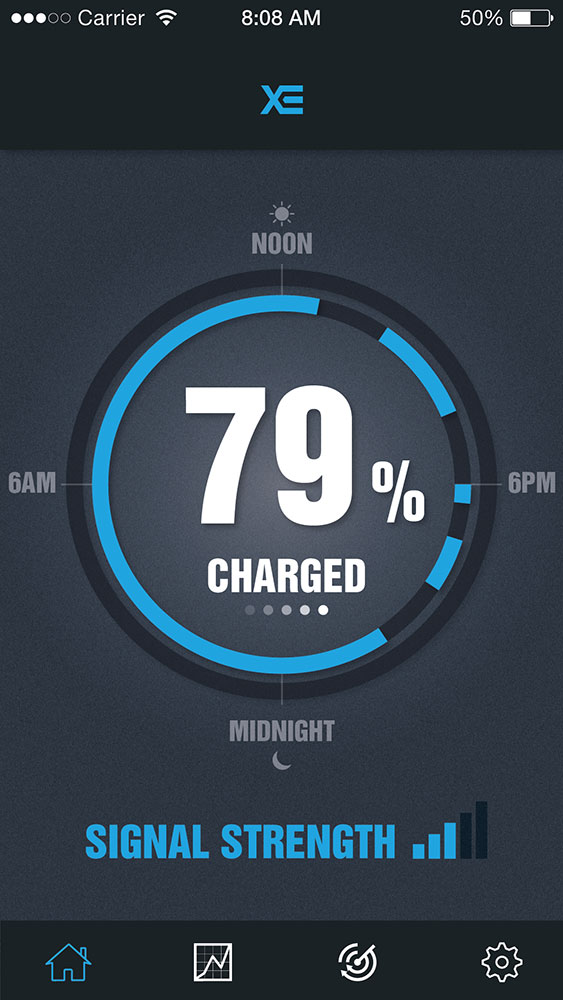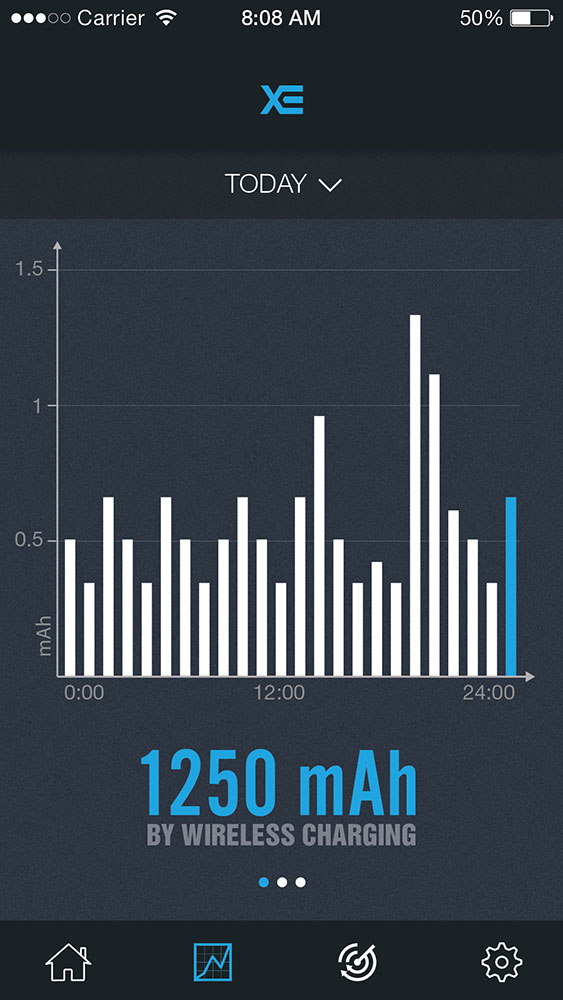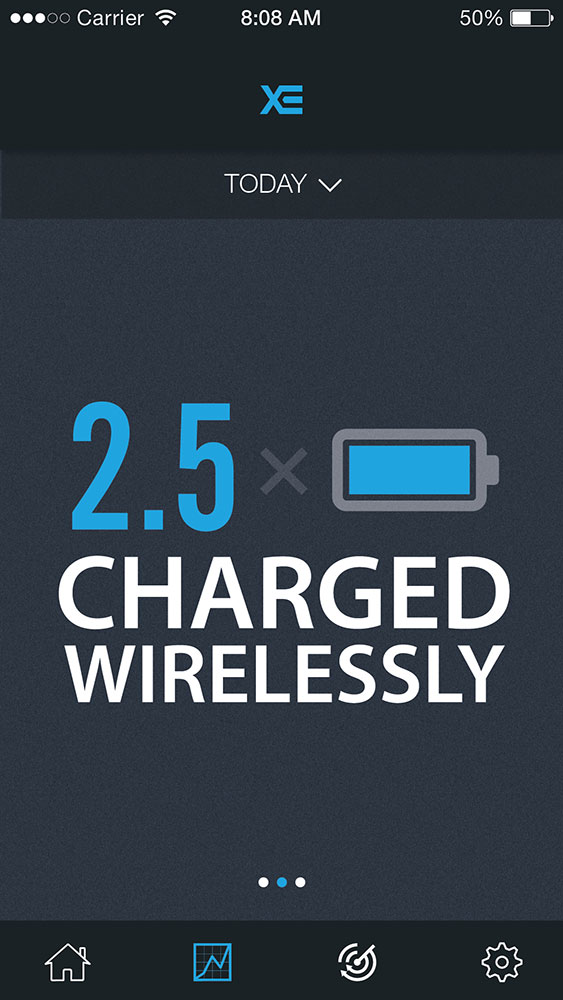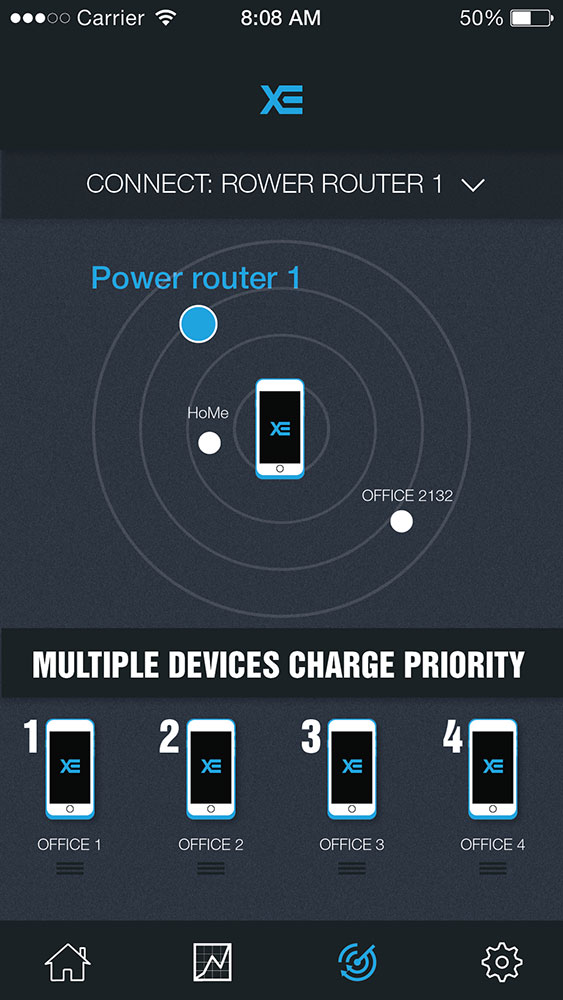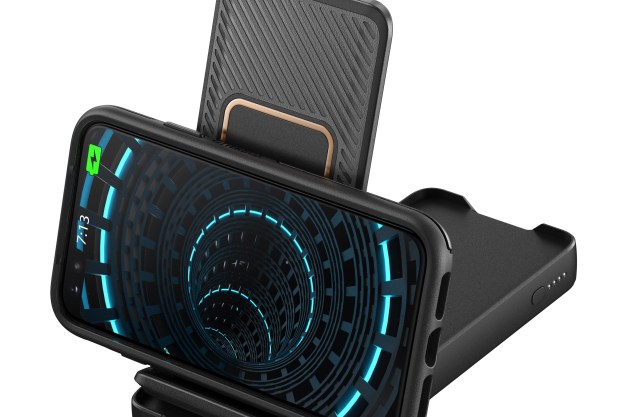Battery life is still the number one complaint about smartphones. Searching for outlets and fumbling with cables has become a common daily routine. Yet the first wave of wireless charging solutions failed to really take off, in part, because you still have to find a plugged-in pad, and it’s difficult to use your smartphone while it’s charging on one. The lack of mass adoption has created a chicken and egg situation where wireless charging doesn’t have the ubiquity it needs to be really useful.
What if wireless charging worked more like Wi-Fi? What if you could walk into an office, restaurant, or home that has a power router and your device began to charge automatically? You wouldn’t even have to remove it from your pocket or bag. That’s the vision TechNovator has for its new XE product.
The base station, or power router, plugs into an outlet and you get a special smartphone case that acts as the receiver. Initially, the company plans to offer cases for the iPhone 6 and 6 Plus when it launches the product on Kickstarter in November — but we got a sneak peek of the product in action.
How does it work?
The principle is based on resonant electromagnetic fields. Nikola Tesla used resonant inductive coupling as far back as 1894, and there have been various examples of wireless energy transfer since then. Electric power is transmitted wirelessly between two transmission coils that operate in a resonant mode. It’s the same basic principle as a radio receiver, a mobile data connection, or Wi-Fi, it’s just a different frequency.

TechNovator CEO, Ivan Chuba, has developed a method based on these principles and, working with a team of eight people in Poland and Ukraine, has created a working prototype.
Digital Trends dialed up Chuba in Ukraine via Skype for an exclusive sneak peek at the prototype XE charge station in action — a tangle of wires and circuitry that, when turned on, sent power approximately nine feet across a room to a smaller panel wired into an old LG phone. After a few seconds, the LG’s screen powered up to show the battery was charging.
When the product ships, you’ll get a charge station and a phone case. You’ll also download the XE app, which lets you set battery levels or specific times of day when you want the system to start and stop charging. The app can also be used to determine which XE you connect to (if you have more than one), set priorities for different devices, and set the intensity of charging; it’s recommended that the intensity is lower when the phone is in use.
How does it compare?
The greater convenience of wireless charging at a distance does come at a price. The XE is going to draw more power than a traditional plug-in charger or Qi wireless charging pad. It has a range of around 17 feet, but the further away you move from the charge station, the slower it will charge. Charging speeds, in general, are going to be slower, but Chuba told us that an average phone, within 5 or 6 feet of the charger, will fully recharge in around four hours.
It doesn’t need direct line of sight to charge, but thick walls and concrete obstacles are going to have an impact. One major benefit of the XE system is that it can charge four devices simultaneously, without a loss of speed, and more devices than that simultaneously at a slower speed.
Is it safe?
It seems as though firing electricity through the air might be dangerous, but Chuba explained that the XE operates at frequencies that surround us from birth. TechNovator has specialized equipment for high-precision measurements of frequency, density, energy flow, and other parameters in its laboratory and has taken steps to ensure that the technology meets safety requirements.
He also mentioned that they’ve been working with the XE prototype for the last year without any special protective screens or devices and have not noticed any health problems or worrisome indicators. (That may not be reassurance enough for everyone.)
Has true wireless charging arrived?
There are other players in this space, most notably Energous and Ossia, but no one is offering a consumer product just yet.
TechNovator will launch the XE as a package that offers the charge station and an iPhone case, but, if successful, it plans to rapidly expand the range. The receiving panel is 3mm thick, so it’s easy to build into phone cases, but it could conceivably be licensed by a manufacturer and built directly into devices in the future. It could be a desirable solution for all our mobile devices, from smartphones and tablets to laptops and wearables.
The final pricing is yet to be decided, but you might expect to pay in the region of $200 for a charge station and a single case.
If you like the look and sound of the XE, sign up for the newsletter at the TechNovator website. We will also keep you posted about the Kickstarter campaign, which is set to launch in November, ahead of a product release in the New Year, and we’ll be doing a hands-on review just as soon as we can get a demo unit.
Editors' Recommendations
- Android 15 might add a new way to charge your gadgets
- Meet the Android phone that charges from 0 to 100% battery in under 10 minutes
- CES 2023: MagSafe-like charging is coming to Android phones this year
- This Android phone charges from 0 to 100% in under 10 minutes — and you can’t have it
- Watts don’t matter when fast charging your phone — time does
